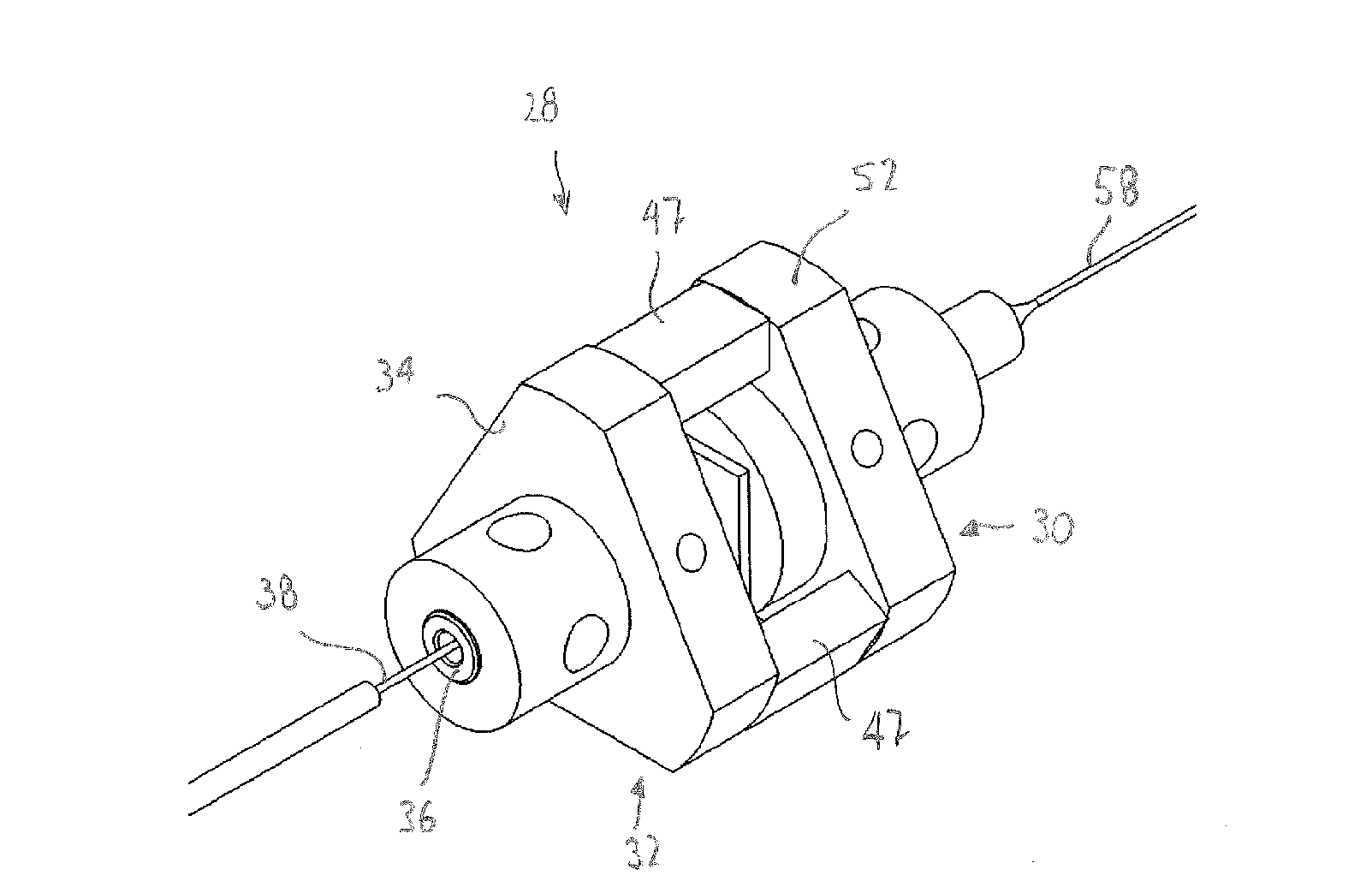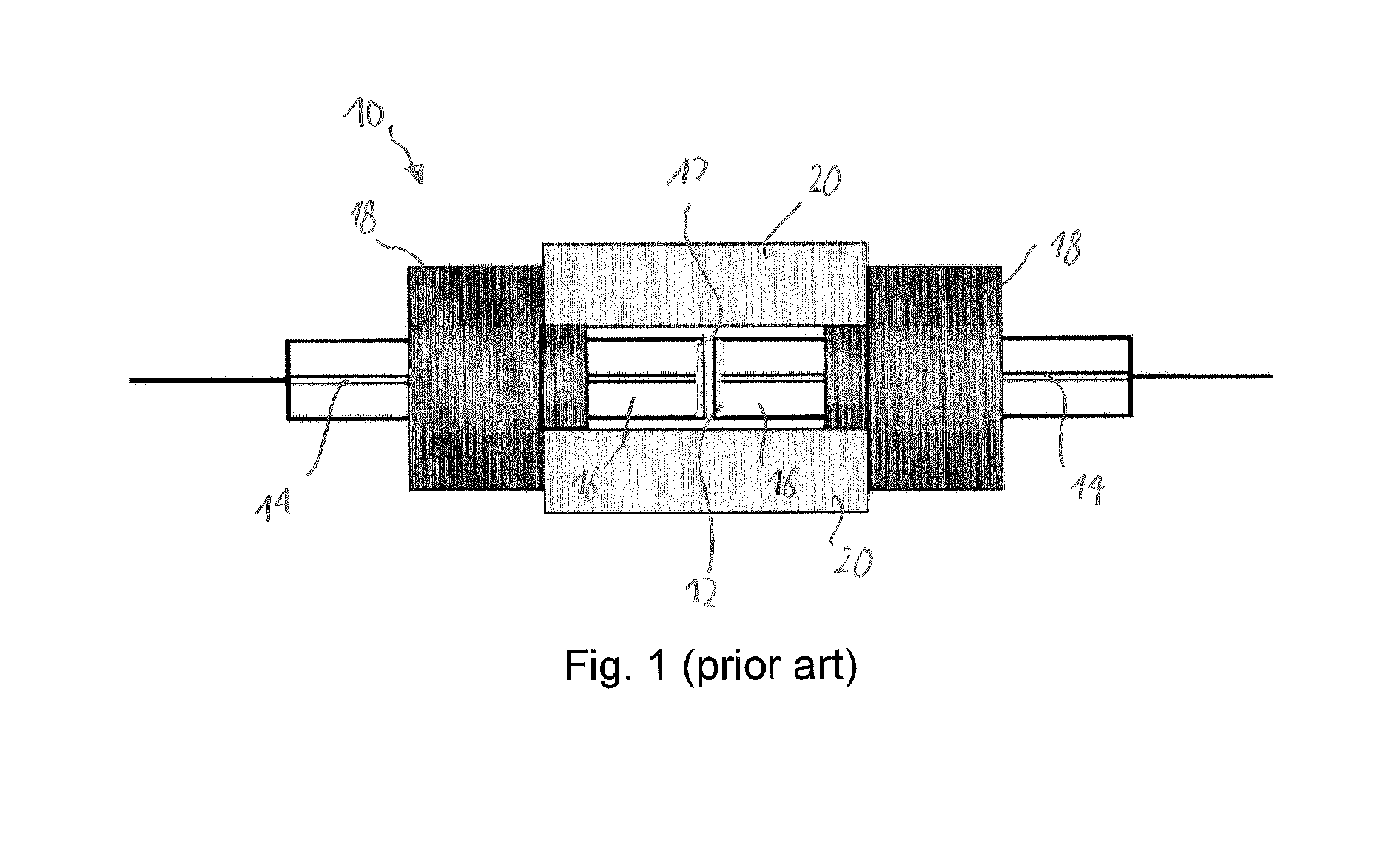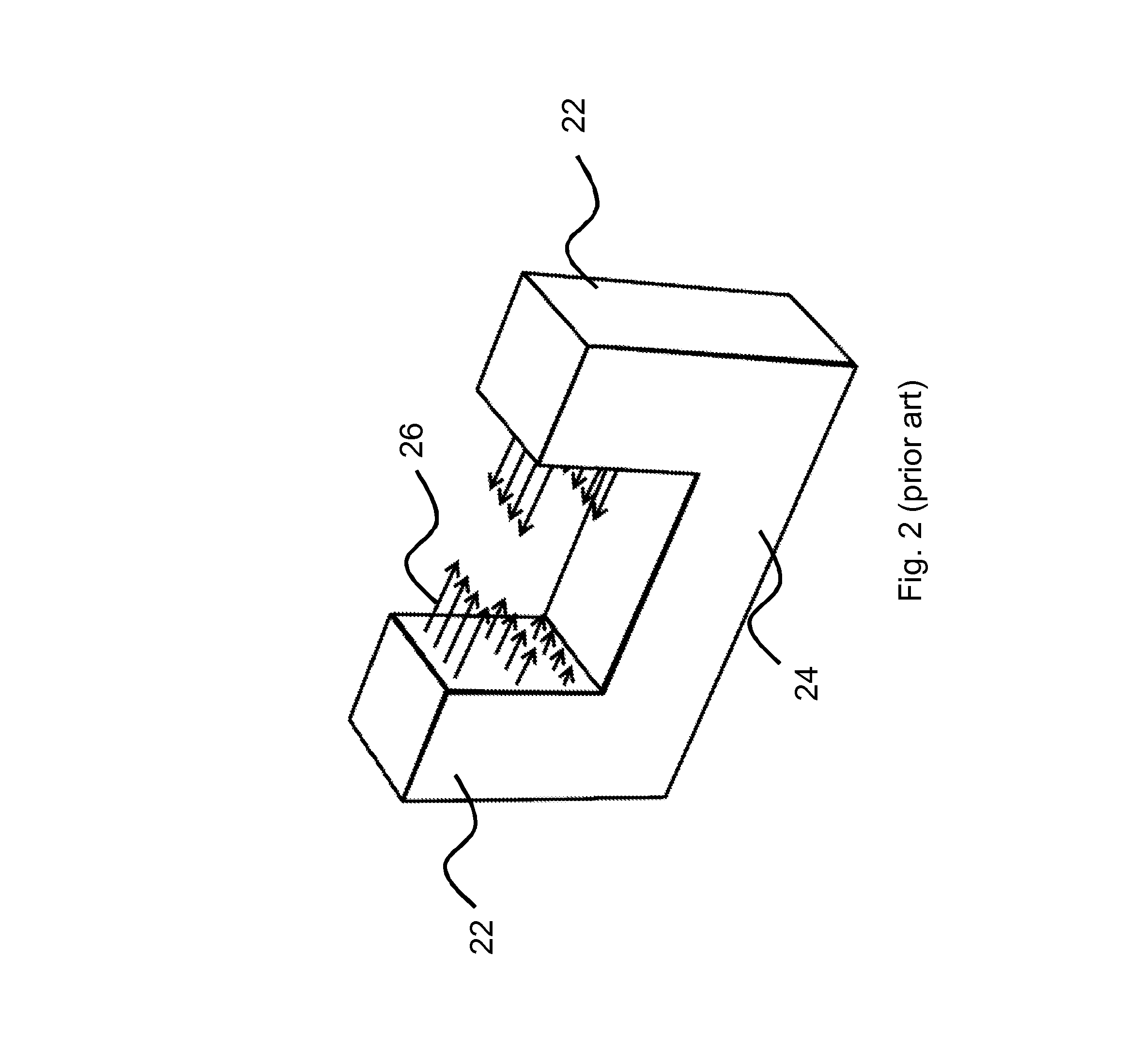Dynamical Fabry-Pérot Tuneable Filter Device
- Summary
- Abstract
- Description
- Claims
- Application Information
AI Technical Summary
Benefits of technology
Problems solved by technology
Method used
Image
Examples
first embodiment
[0157]an FP-TF device 28 according to the invention will be described with reference to FIGS. 5(a) to 6(b). Herein, FIG. 5(a) shows a perspective view of the FP-TF device 28, FIG. 5(b) a side view of the FP-TF device 28 and FIG. 6(a) a sectional view of the FP-TF device 28. FIG. 6(b) is an enlarged portion of the sectional view of FIG. 6(a).
[0158]As is best seen in the sectional view of FIG. 6(a), the FP-TF device 28 of the first embodiment is comprised of two parts, a first part 30 and a second part 32. The second part 32 is very similar to one half of an ordinary fiber FP-TF as shown in FIG. 1 and shall therefore be described first. The second part 32 comprises a second holding frame 34 which may be made from aluminum. The second holding frame 34 supports a ferrule 36 which in turn supports a second optical fiber 38. A second reflective surface 40 is provided at the end of the second optical fiber 38 which is best seen in the enlarged view of FIG. 6(b). As is seen in FIG. 6(b), th...
second embodiment
[0172]FIG. 11 shows the frequency response of the fiber FP-TF device 66 according to the invention, confirming that the response is higher than the DC-response at frequencies considerably above 200 kHz.
[0173]An important constructional difference between the fiber FP-TF device 66 of FIGS. 10(a) and (b) as compared to the embodiments of FIGS. 1 and 2 is again that the first piezo-actuator 74 only drives the first reflecting element, i.e. the reflecting surface at the end of the fiber held by the first ferrule 68, so that the mass that needs to be moved by the first piezo-actuator 74 is comparatively small. In order to reduce weight, the conical supporting member 76 is made from a light weight metal, such as aluminum or magnesium. Also, the conical shape allows for a large area to receive thrust force from the first piezo-actuator 74 while avoiding unnecessary mass.
[0174]Further, both the first piezo-actuator 74 and the conical supporting member 76 are ring-shaped, allowing the first ...
PUM
 Login to View More
Login to View More Abstract
Description
Claims
Application Information
 Login to View More
Login to View More - R&D
- Intellectual Property
- Life Sciences
- Materials
- Tech Scout
- Unparalleled Data Quality
- Higher Quality Content
- 60% Fewer Hallucinations
Browse by: Latest US Patents, China's latest patents, Technical Efficacy Thesaurus, Application Domain, Technology Topic, Popular Technical Reports.
© 2025 PatSnap. All rights reserved.Legal|Privacy policy|Modern Slavery Act Transparency Statement|Sitemap|About US| Contact US: help@patsnap.com



